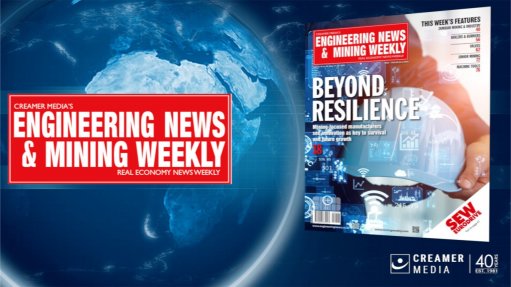Get accurate with small precision grinding tools from Grinding Techniques
When it comes to small precision grinding tools, internal grinding is probably the most popular grinding application. Being one of the most difficult operations owing to the way the part to be ground and the grinding wheel is set up, this is an operation where the internal part of cylindrical parts is ground. Compared to external cylindrical grinding, it is quite a challenging operation, owing to the increased contact area between the grinding wheel and part, as well as reduced visibility of the part being ground.
Internal cylindrical grinding is an operation that requires a well-trained operator as they must make use of their other senses such as feeling and hearing. Before the grinding application can commence, it is important for the parts to be machined as close to the required tolerance as possible, to reduce grinding to a minimum in an effort to minimise grinding costs. If the holes to be ground are rough, out of round with the axis of rotation, the stock that needs to be removed will be distributed unevenly increasing overall grinding time, leading to unnecessary wheel wear.
Heat treated parts with long holes and thin wall thicknesses should be left with more material to be ground due to the part potentially being distorted during heat treatment.
Selecting a grinding wheel with the correct specification is of utmost importance. Generally, a soft specification is used on hard-to-grind materials, and a harder specification on softer materials. With a wide selection of grains, consideration should be given to the hardness and composition of the part being ground. Materials that are hardened between 60 HRC and 63 HRC will be suited to a wheel containing a high percentage of ceramic grain. This will increase the overall stock removal rate, number of parts between dressing and deliver better form holding during application.
Another important part of the internal cylindrical grinding process is the coolant. In essence, it is quite difficult to get the coolant applied straight into the contact zone, where the grinding wheels come in contact with the workpiece. In this case, consideration should be given to the choice of grain. Using ceramic grain will alleviate heat generation at this point, as these grains are known to have cooler grinding properties compared to conventional aluminum oxide grains, aiding in a more successful application.
To determine the correct size grinding wheel to be used on the workpiece, we recommend grinding wheels to be around 75% of the workpiece’s internal diameter and at least 25% in contact with the workpiece as its traversers.
Available in shapes 1 and 5, ranging in diameters from 12 mm up to 150 mm, grinding wheels with a coarse grain normally yields a higher stock removal rate. However, when grinding workpieces with hardened alloys which are difficult to penetrate, a finer grain is recommended as there will be more cutting points in contact with the workpiece.
The area of contact is of extreme importance, as a large area of contact will need a grinding wheel with a coarse grain, soft grade, and open structure to aid in chip clearance on application. Once the area of contact has an interrupted surface such as a keyway, a grinding wheel with a harder grade should be used, as the interrupted surface will dress the wheel away.
The relationship between the grinding wheel and work speed should also be considered. A workpiece with a higher speed in relation to the grinding wheel will impose more load onto the grinding wheel which will break down the wheel too quickly. To eliminate this, a grinding wheel with a harder grade may be used. Where the grinding wheels are running at higher speeds, a grinding wheel with a softer grade can be used to eliminate the wheel burning the material.
For extremely small holes, we stock a selection of special shaped mounted points in the “W” range to assist with accurate stock removal.
Whatever your application, we have a range of abrasive solutions available. Partner with us today and move your business forward.
Contact one of our application specialists today: +27 11 271 6400| info@grindtech.com| www.grindtech.com
Comments
Press Office
Announcements
What's On
Subscribe to improve your user experience...
Option 1 (equivalent of R125 a month):
Receive a weekly copy of Creamer Media's Engineering News & Mining Weekly magazine
(print copy for those in South Africa and e-magazine for those outside of South Africa)
Receive daily email newsletters
Access to full search results
Access archive of magazine back copies
Access to Projects in Progress
Access to ONE Research Report of your choice in PDF format
Option 2 (equivalent of R375 a month):
All benefits from Option 1
PLUS
Access to Creamer Media's Research Channel Africa for ALL Research Reports, in PDF format, on various industrial and mining sectors
including Electricity; Water; Energy Transition; Hydrogen; Roads, Rail and Ports; Coal; Gold; Platinum; Battery Metals; etc.
Already a subscriber?
Forgotten your password?
Receive weekly copy of Creamer Media's Engineering News & Mining Weekly magazine (print copy for those in South Africa and e-magazine for those outside of South Africa)
➕
Recieve daily email newsletters
➕
Access to full search results
➕
Access archive of magazine back copies
➕
Access to Projects in Progress
➕
Access to ONE Research Report of your choice in PDF format
RESEARCH CHANNEL AFRICA
R4500 (equivalent of R375 a month)
SUBSCRIBEAll benefits from Option 1
➕
Access to Creamer Media's Research Channel Africa for ALL Research Reports on various industrial and mining sectors, in PDF format, including on:
Electricity
➕
Water
➕
Energy Transition
➕
Hydrogen
➕
Roads, Rail and Ports
➕
Coal
➕
Gold
➕
Platinum
➕
Battery Metals
➕
etc.
Receive all benefits from Option 1 or Option 2 delivered to numerous people at your company
➕
Multiple User names and Passwords for simultaneous log-ins
➕
Intranet integration access to all in your organisation























